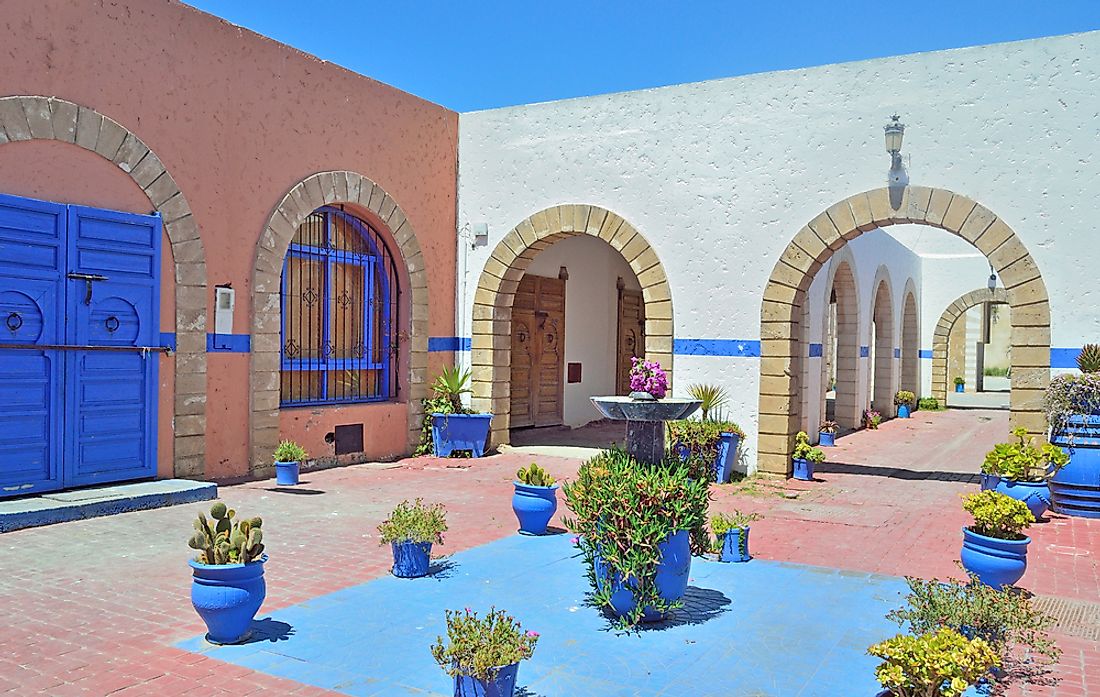Morocco Culture, Customs, and Traditions

The history of Morocco is tied up with that of the Berber people who repelled the ancient Roman colonialists and later survived several Islamic dynasties. Throughout centuries, several groups have left their mark on the country, the effect of which is evident in the diverse culture. The culture of Morocco is as diverse as its landscape. However, despite the diverse culture and ethnicity, the country has managed to maintain unity. Apart from the Berbers, the culture of Morocco has been influenced by the Arabs, Phoenicians, Sub-Saharan Africans, and the Romans among other groups. The culture may differ from one region to another and is particularly evident in cuisine, art, clothing, music, and clothing.
Overview of Moroccan Culture
The culture of Morocco is a blend of ethnic tradition and religion, reflecting the Berber, African, Arabs, and Jewish influence. The majority of the population are Berbers and Arabs while at least 30% of the population are Amazigh speakers. Berber influence is most prominent in a wide range of activities and way of life of the Moroccan people. Although the cuisine differs from one region to another, the spices used are mainly those of the Berbers. The use of fresh fruits and vegetables is mainly as a result of the country’s proximity to the Mediterranean. The Moroccan music is characterized by several traditional instruments mainly of the Arab and Amazigh origin. It is home to Andalusian classical music which is common throughout North Africa.
Languages and Religion
The majority of the people living in Morocco are Berbers and Arabs. The official languages are Berber and Arabic. French is also widely spoken except in the northern region where Spanish is predominant. English is mainly spoken in major tourist towns like Marrakech and other towns in the north. Islam is the major religion in the country and forms the foundation for most families. The people insist on unity in the family and children are taught to take care of their parents when they grow old. Thus, there are very few homes for the elderly in Morocco. Islam is constitutionally a state religion with the vast majority belonging to the Sunni Muslim group. Christianity is the second-largest religious group in Morocco. However, the majority of Christians are foreigners. Other religions include Judaism and Baha’I faith. Approximately 7% of the population are irreligious.
Traditional Moroccan Clothing
The traditional Moroccan dress for both men and women is the djellaba which is a long, loose, hooded cloth with full sleeves. The hood has a qob which protects the wearer from the sun or cold depending on the weather. During special occasions, men wear bernouse or a red cap, commonly referred to as fez while the women wear kaftans. The difference between a kaftan and djellaba is the hood which kaftan does not have. Women’s djellaba is brightly colored and kaftans are decorated with ornaments. Men’s djellaba is mainly plain and colored neutrally. Kaftan is synonymous with elegance and style and can be made up of several layers known as takshita. It can either be dressed up or dressed down as a casual wear. Kaftan traces its origin from the Ottoman Empire in the 14th century. The youth in Morocco are slowly abandoning their traditional clothing for western dress.
Moroccan Wedding
A Moroccan wedding is one of the most celebrated events in the country. Before the wedding day, the groom is expected to give his bride some gifts including sugar and henna. Two days to the big day, the bride is required to attend the traditional Hamam (sauna) with her relatives for purification. At the sauna, the bride and the family mainly sing the traditional songs. The next event that follows is the use of henna where a professional draws relevant symbols and patterns on the bride’s hands and feet. The wedding ceremony lasts at least 4 to 8 hours. During the wedding, the Negafa (make-up artist) is tasked with ensuring that the bride stays elegant throughout the day. The couple often sit on a traditional ornamental chair called Amariya. Weddings are considered a community event, often characterized by plenty of food, drinks, and dancing that may go well into the night.
Moroccan Food
Moroccan food is usually well cooked and immensely detailed. Knowing how to cook with spices is the most crucial part of the cuisine. The Moroccan cuisine is mainly influenced by the interactions with other cultures and nations over time. The cuisine is typically a mixture of Arabic, Mediterranean, and Andalusian cuisine with some European influence. The food components include the Mediterranean fruits and vegetables and meat which serves as a base for the cuisine. Commonly used spices include cumin, oregano, caraway, and mint. The Ras El Hanout spice is made by combining 27 other spices. The main Moroccan dish is couscous which is made up of crushed durum wheat semolina. Beef and lamb are the commonly consumed red meat. Other common dishes include pastilla, harira, and tanjia. Green tea with mint is the most popular drink in Morocco. Making the mint tea is an art and drinking it with family and friends is considered a daily tradition. The tea is put in special teapots which allows it to be poured evenly into tiny glasses from a height.
Moroccan Art
Moroccan art has been influenced by other cultures and nations. However, the Berbers and the Arabs are credited for building an incredible art scene in the country. Their architecture includes the famous red Kasbahs castle which was inhabited by the ruling class. The crafts feature carved doors with unique patterns and colorful carpets. The modern Moroccan art has also been inspired by the traditional Berber art and Islamic influence. One of the intriguing Islamic tile mosaics is the Kellij which begun flourishing in the 14th century. Most of the houses were decorated with Kellij as a statement of affluence and class.











